Ellora Caves: By the 5th century CE, the reigning rulers, Rashtrukutas, patronized the rock cut cave structures. Around 30 kms away from Aurangabad city, 100 rock-cut caves were carved out between 5th and 10th century and named as Ellora Caves. Today only 34 out of 100 caves are open for the public. While most caves in Ajanta were dedicated to Buddhism, at Ellora one will find caves belonging to the religions of Buddhism, Hinduism and Jainism.
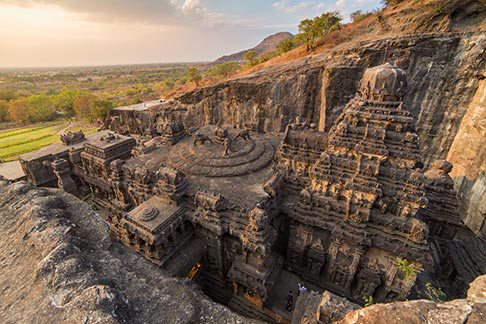
This is a testimony of the religious tolerance that has been a part and parcel of the Indian culture since time immemorial. The one that grabs everyone’s attention here is the world renowned Kailasha Temple, which is the largest monolithic rock cut excavation in the world.
Aurangabad caves: Situated around 5kms away from Aurangabad city, this group of 12 rock-cut Buddhist caves were also carved out in the same period as Ajanta caves.
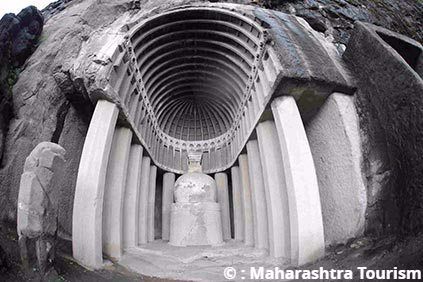
What makes these caves interesting is that unlike many other Buddhist caves, these caves are believed to be used for a longer period, until the 7th century CE. In this complex while the majority of the caves are Buddhist, some are dedicated to Hindu Gods as well.
Pitalkhora caves: These caves were also carved out around the same period as Ajanta caves and Aurangabad caves. The complex has 14 Buddhist caves, wherein 10 are Viharas, and 04 are Chaityas.

Located around 80 kms from Aurangabad city and 50 kms from Ellora caves, these rock-cut caves are of the Hinayana sect. However, the paintings inside are of the Mahayana sect. These caves are the main source in determining the chronology of Ajanta and Ellora caves.
HOW THE CITY WAS BUILT?
In around 1187, Yadavas built a fortified citadel called
Devagiri, around 65 kms from Paithan. The triangular fort was unique and appeared invincible due to its design and architecture. The false gates, curved walls, complex doorways provided it a strong defense.

However, Yadavas could not hold it for long, and it was captured by Alauddin Khilji of Delhi Sultanate in 1308. In around 1327, Muhammad Bin Tughluq of Delhi sultanate renamed the city as Daulatabad due to the city's riches, and the fort was also aptly renamed Daulatabad Fort.
A two-hour climb up to the fort provides a magnificent view of the surroundings. Here one can spot Chand Minar, a replica of Qutub Minar (in Delhi) built within the fort (closed for visit to the general public). Another attraction in the fort complex is the VIP prison built by Aurangzeb called Chini Mahal.
In 1610, Malik Abrar, the prime minister of Ahmednagar Sultanate occupied this fort. One could not resist admiring the intelligence and skills of this very strong leader of the Sultanate, whose own journey itself is very interesting to inspire anyone. He was enslaved after being captured in Ethiopia to be sold several times before landing in India as a slave. His strengths brought him to the forefront, and he remained the Sultanate leader throughout his life. He built the city on Khadki village and named it Khadkee, which means a region surrounded by rocky terrains. He built an intelligent water system that used gravitational force for irrigation and transported the water from a river flowing at a distance of 8 kms. He was such a strong leader that the Mughals could not invade Khadkee as long as he was alive. One of his victories against the Mughals made him erect a victory gate in Khadkee, called Bhadkal gate. The city's biggest gate is believed to be the first column structure in India. After his death, he was succeeded by his son Fateh Khan and the city was re-named, Fateh Nagar.
In 1633, the Deccan was captured by Mughal emperor Shah Jahan, and Aurangzeb became the governor, who stayed in Daulatabad fort. As soon as he became the viceroy in 1653, he shifted his capital to Fatehnagar and the city was again renamed Aurangabad. He fortified the city to avoid Maratha invasions and built 51 gates to facilitate entry and exit from the city. Having so many gates around, it earned the city a nickname as the ‘City of Gates’. Each of the gates named as per their position and importance had its own story. However, with time, most of the gates and their stories faded away. Today, only 14 gates are left, with four main gates facing four directions.
Let us now explore some the monuments in Aurangabad:
Bibi ka Maqbara: Aurangzeb built this mausoleum in memory of his wife, Dilras Bano. Originally intended to rival the Taj Mahal, it bears a striking resemblance to the mausoleum of Aurangzeb's mother in Agra and therefore it is often called as The Taj of Deccan or Mini Taj Mahal.
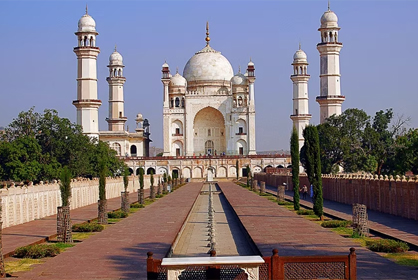
Interestingly the son of the chief architect of Taj Mahal was appointed to design this monument. But due to the budget constraints most of the structure here is built of limestone instead of marble as in Taj Mahal. The motifs and carvings here makes it worth visiting.
Panchakki: It is a beautiful example of medieval engineering wherein water from the mountains (8 kms away) is channelized underground to feed the watermill.

This 17th-century watermill was used to utilize the energy of flowing water to let the wheels of the grinder to move and grind grains for the pilgrims and disciples of the mosque where this watermill is located.
From exploring prehistoric caves to visiting ancient monuments depicting architectural grandeur and finesse of the ancient Indian craftsmen, Aurangabad has a lot to experience. Come and explore this ‘City of Gates’ with us!

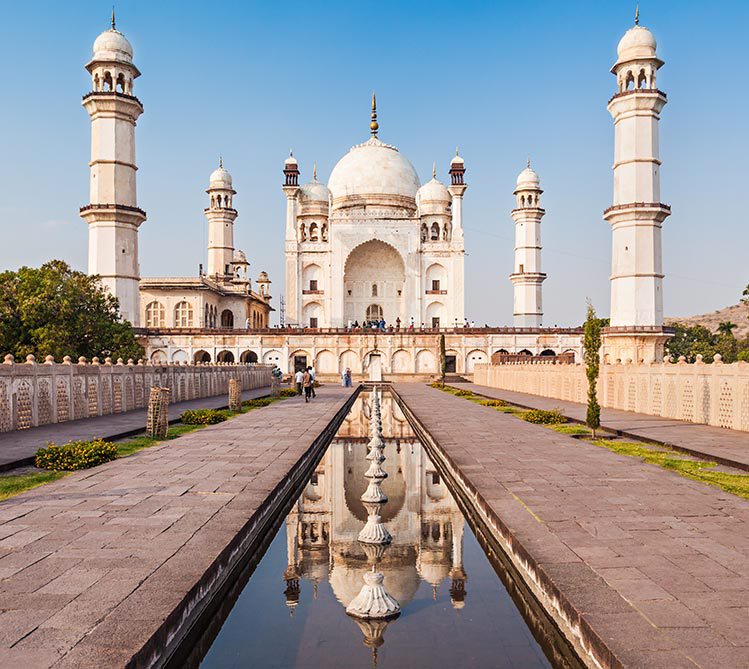
 A single exquisite piece of Paithani saree takes about from one month upto a year depending upon the intricacies of work. The art can be witnessed in Paithan, where it is still practiced in the same way as 2000 years ago. Watch a video on Paithani Sarees
A single exquisite piece of Paithani saree takes about from one month upto a year depending upon the intricacies of work. The art can be witnessed in Paithan, where it is still practiced in the same way as 2000 years ago. Watch a video on Paithani Sarees
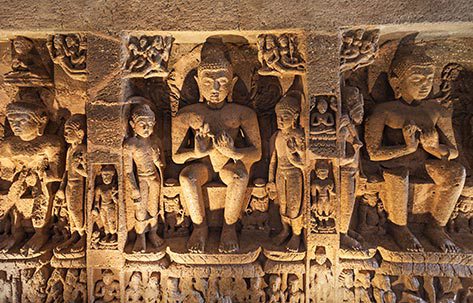 Listed as a UNESCO world heritage site, these caves are a blend of sculptures, paintings, and intricate carvings on roofs and pillars, along with many inscriptions. Explore Ajanta caves in this walk through.
Listed as a UNESCO world heritage site, these caves are a blend of sculptures, paintings, and intricate carvings on roofs and pillars, along with many inscriptions. Explore Ajanta caves in this walk through.
 This is a testimony of the religious tolerance that has been a part and parcel of the Indian culture since time immemorial. The one that grabs everyone’s attention here is the world renowned Kailasha Temple, which is the largest monolithic rock cut excavation in the world.
This is a testimony of the religious tolerance that has been a part and parcel of the Indian culture since time immemorial. The one that grabs everyone’s attention here is the world renowned Kailasha Temple, which is the largest monolithic rock cut excavation in the world.
 What makes these caves interesting is that unlike many other Buddhist caves, these caves are believed to be used for a longer period, until the 7th century CE. In this complex while the majority of the caves are Buddhist, some are dedicated to Hindu Gods as well.
What makes these caves interesting is that unlike many other Buddhist caves, these caves are believed to be used for a longer period, until the 7th century CE. In this complex while the majority of the caves are Buddhist, some are dedicated to Hindu Gods as well.
 Located around 80 kms from Aurangabad city and 50 kms from Ellora caves, these rock-cut caves are of the Hinayana sect. However, the paintings inside are of the Mahayana sect. These caves are the main source in determining the chronology of Ajanta and Ellora caves.
Located around 80 kms from Aurangabad city and 50 kms from Ellora caves, these rock-cut caves are of the Hinayana sect. However, the paintings inside are of the Mahayana sect. These caves are the main source in determining the chronology of Ajanta and Ellora caves.
 However, Yadavas could not hold it for long, and it was captured by Alauddin Khilji of Delhi Sultanate in 1308. In around 1327, Muhammad Bin Tughluq of Delhi sultanate renamed the city as Daulatabad due to the city's riches, and the fort was also aptly renamed Daulatabad Fort.
However, Yadavas could not hold it for long, and it was captured by Alauddin Khilji of Delhi Sultanate in 1308. In around 1327, Muhammad Bin Tughluq of Delhi sultanate renamed the city as Daulatabad due to the city's riches, and the fort was also aptly renamed Daulatabad Fort.
 Interestingly the son of the chief architect of Taj Mahal was appointed to design this monument. But due to the budget constraints most of the structure here is built of limestone instead of marble as in Taj Mahal. The motifs and carvings here makes it worth visiting.
Interestingly the son of the chief architect of Taj Mahal was appointed to design this monument. But due to the budget constraints most of the structure here is built of limestone instead of marble as in Taj Mahal. The motifs and carvings here makes it worth visiting.
 This 17th-century watermill was used to utilize the energy of flowing water to let the wheels of the grinder to move and grind grains for the pilgrims and disciples of the mosque where this watermill is located.
This 17th-century watermill was used to utilize the energy of flowing water to let the wheels of the grinder to move and grind grains for the pilgrims and disciples of the mosque where this watermill is located.
 Thank you, patrons, for reposing faith in our destinations and enquiring for customised virtual destination awareness training programs. We are proud to conduct them successfully so far and are looking forward to hold similar virtual destination awareness training programs for your team or yourself or a virtual tour for your clients. Let us know the destination of your interest along with your convenient date / time and we will be happy to set up a program for you./span>
Thank you, patrons, for reposing faith in our destinations and enquiring for customised virtual destination awareness training programs. We are proud to conduct them successfully so far and are looking forward to hold similar virtual destination awareness training programs for your team or yourself or a virtual tour for your clients. Let us know the destination of your interest along with your convenient date / time and we will be happy to set up a program for you./span>

